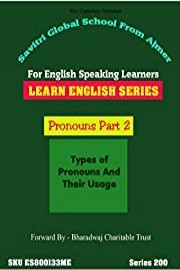-
Genres
-
CastDrAnup
-
DirectorBharadwaj Charitable Trust
-
Release Date2015
-
MPAA RatingNR
-
Runtime52 min

English Lesson - Pronouns Part 2 of 4 vClass by Dr Anup is an online learning resource for anyone looking to improve their understanding and use of English pronouns. This educational video features Dr Anup, an experienced English teacher, who walks learners through the different types of pronouns, their usage, and provides examples to help learners fully comprehend the concepts.
The video is part of a series of 4 lessons aimed at helping learners of all levels master the usage of English pronouns. In Part 1, Dr Anup introduced learners to the basics of pronouns and their functions in English sentences. In Part 2, the focus is on the different types of pronouns, such as personal pronouns, possessive pronouns, reflexive pronouns, and relative pronouns.
The video begins with an introduction to personal pronouns, which are used to refer to the speaker, the listener, and others in a conversation. Dr Anup explains the different forms of personal pronouns, including subject pronouns, object pronouns, and possessive pronouns. He also provides examples sentences to help learners understand the usage of each type of personal pronoun.
Next, the video moves on to discuss possessive pronouns. Dr Anup explains that possessive pronouns are used to show ownership or possession of something. He provides examples with different possessive pronouns such as "my," "your," "his," "her," "its," "our," and "their." The learners get to practice using possessive pronouns in sentences to ensure better understanding.
After the discussion on possessive pronouns, reflexive pronouns get introduced. Dr Anup explains that reflexive pronouns are used when the subject and the object of the verb are the same. He provides examples of reflexive pronouns such as "myself," "yourself," "himself," "herself," "itself," "ourselves," and "themselves." The learners get to practice using reflexive pronouns in sentences, as it is practiced in every lesson.
Lastly, the video focuses on relative pronouns. Dr Anup explains that relative pronouns are used to link two sentences, one of which gives more information about the other. He provides different examples of relative pronouns such as "who," "whom," "whose," "which," and "that," and demonstrates how to use them in sentences.
Throughout the video, Dr Anup takes the learners through each concept in detail and with ease, allowing learners to follow along without any difficulty. He uses illustrative examples and encourages the learners to participate actively in the class for better learning. The video is very concise, easy to understand, . It comes with exercises that test the comprehension of learners after every concept.
In conclusion, English Lesson - Pronouns Part 2 of 4 vClass by Dr Anup is an invaluable online resource for anyone looking to improve their English language skills, particularly in the area of pronouns. Dr Anup's expertise as an English teacher is evident in this presentation, where he breaks down each subject into easily digestible concepts. This video offers learners the opportunity to brush up on their English language skills, making communication and writing much easier.